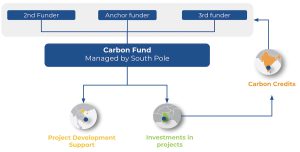How Much Does Carbon Credit Cost?
Carbon Credit Cost
If you are interested in investing in carbon credits, it is important to understand how much a carbon credit costs. This can help you decide whether a particular company or investment fund is worth your money. The price of carbon credits can vary, and understanding how much a tonne of carbon dioxide costs can help you choose the right green companies and investment funds.
The cost of a carbon.credit depends on a number of factors, including the vintage, the project’s location and the size of the project. A good quality carbon credit can be priced as low as $7 to as high as $17 per tonne. However, these prices tend to be fairly modest compared to the social value of a carbon reduction.

Carbon credits are traded on the international market. These are created by companies or governments that have reduced their greenhouse gas (GHG) emissions. They are then sold to other companies, and the money resulting from the sale goes back into funding projects around the world to reduce GHGs. In addition to helping to reduce emissions, carbon credits can also contribute to the development of co-benefits, or other benefits to the environment.
How Much Does Carbon Credit Cost?
Carbon prices are driven primarily by supply and demand in the carbon markets. Prices will also be affected by the type of supply and customers. Some projects are large industrial-style projects, while others are community-based clean cookstoves projects that offer life-saving health and environmental benefits.
Prices for carbon credits in the voluntary market are not governed by any regulatory body. Instead, they are determined by a mix of supply and demand. Since there is no minimum price, it can be difficult to determine whether you are getting a fair deal.
The cost of a carbon credit is influenced by several factors, such as the size and quality of the project, the location, and the supply and demand of the project. It is important to note that the market is characterized by a lack of liquidity and poor risk-management services.
A new index from IHS Markit helps investors understand the risks associated with carbon-intensive industries. The index includes an internal price on carbon, which can drive innovation and investment in Gold Standard-certified emissions reduction activities. Another factor is data transparency, which can influence the willingness of companies to pay for credits.
Carbon prices are expected to increase in the future as demand increases. One of the major drivers of this trend is the Paris Agreement, which called on all countries to reduce their emissions by at least 26 percent by 2030. Many countries have already begun trying to meet their obligations by purchasing additional carbon credits. While many companies may not be willing to take the plunge today, it is likely that the market for carbon offsets will grow.
Investing in carbon credits is one of the best ways to help address the issue of greenhouse gas emissions. Companies can purchase credits from companies that have a proven record of reducing their emissions, or they can develop a plan to reduce their own emissions.